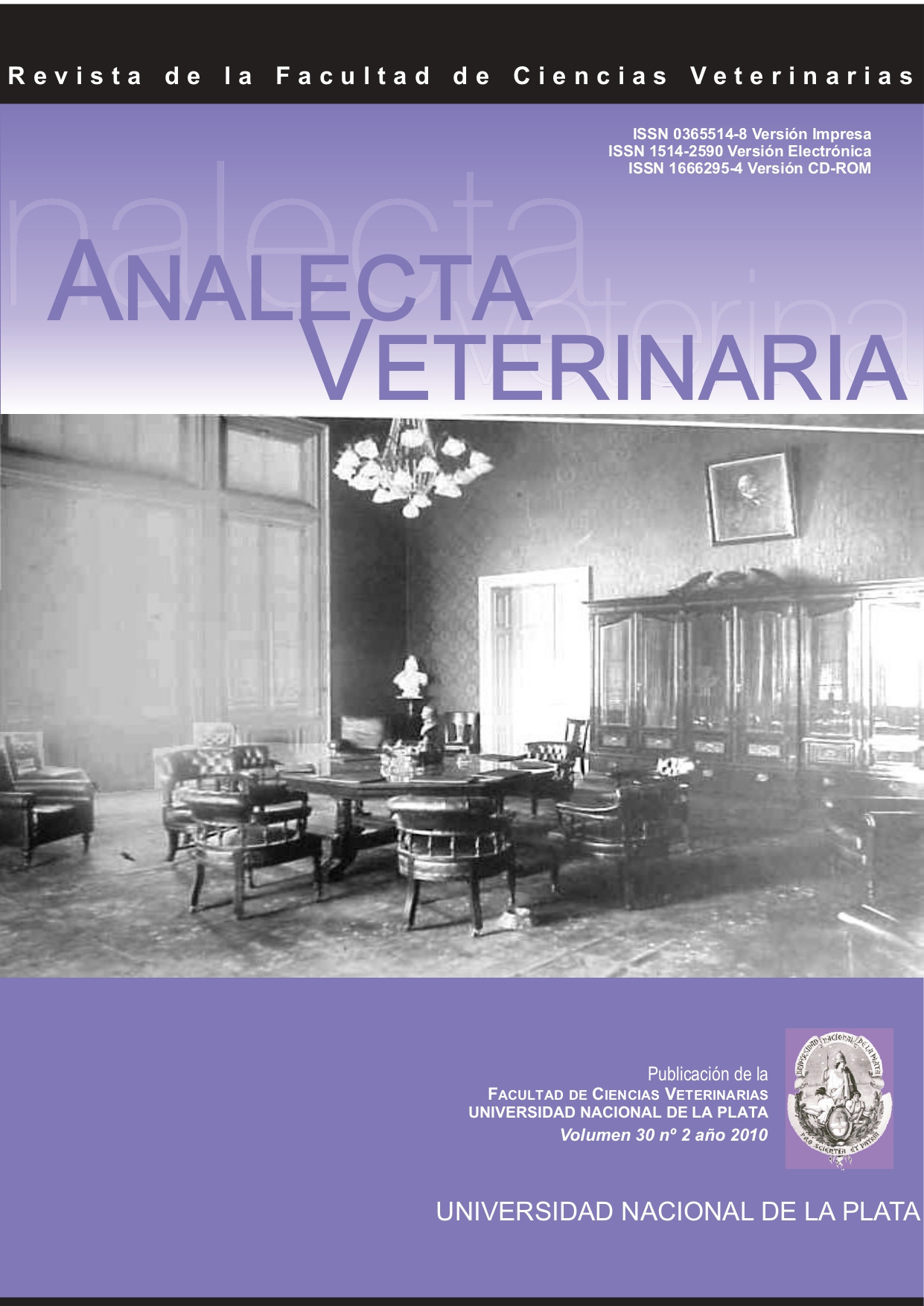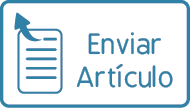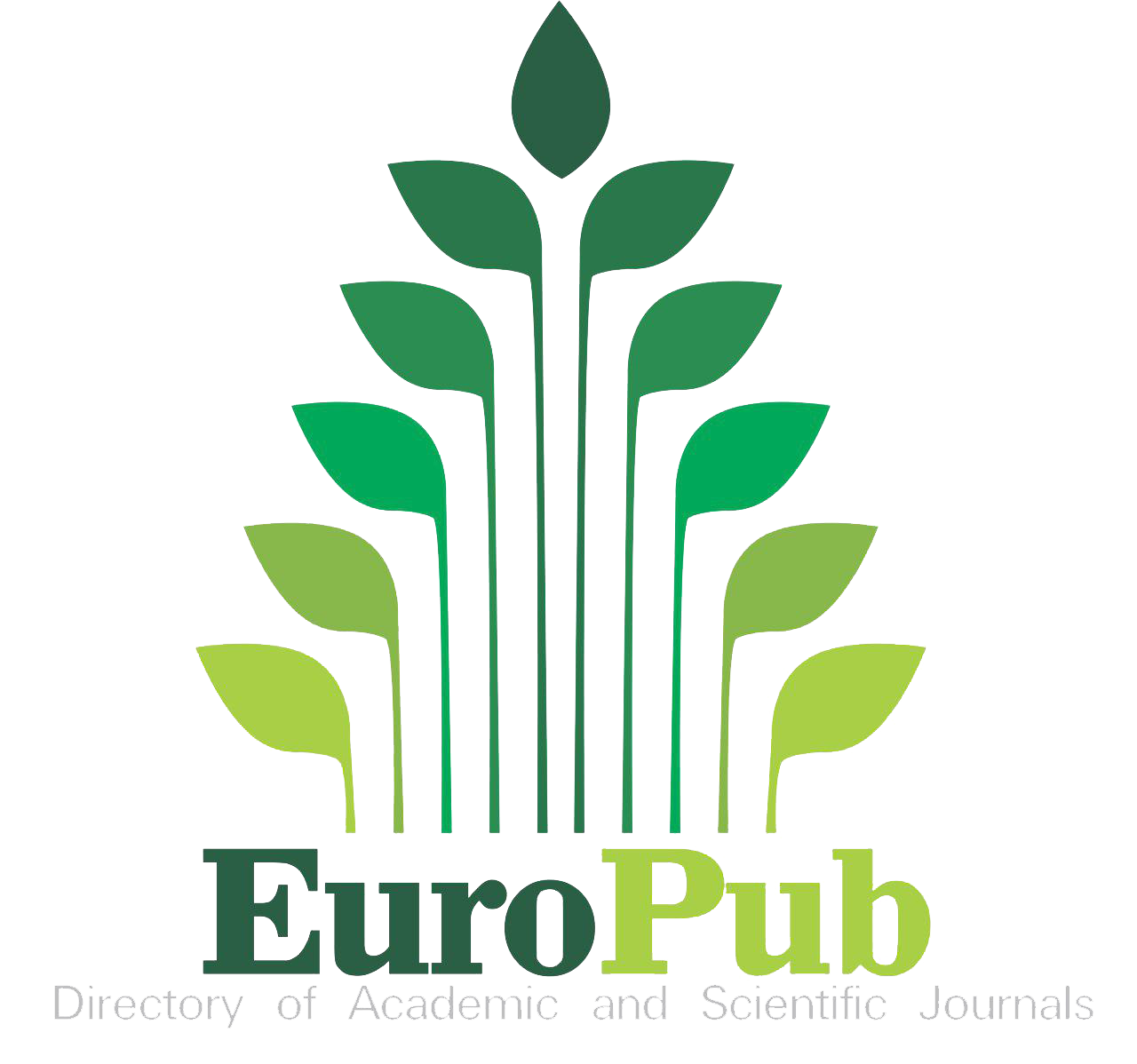Osteocondrosis en equinos: un problema latente de la industria hípica
Palabras clave:
osteocondrosis, equinos, osificación endocondral, etiopatogeniaResumen
Esta revisión esta centrada en la Osteocondrosis (OC) en equinos. La osteocondrosis es un disturbio en la osificación endocondral de etiología multifactorial que afecta a equinos y otras especies animales. No hay un acuerdo entre los investigadores en la clasificación de la OC; algunos sostienen que se trata de una enfermedad metabólica mientras que otros la incluyen dentro de las Enfermedades Ortopédicas del Desarrollo (DOD). En los caballos la OC afecta principalmente a las articulaciones de nudos, tarsos y babillas. Las lesiones pueden aparecer en varias localizaciones en un mismo animal, a veces ocurren en sitios bilaterales y simétricos. Los signos clínicos son principalmente la distensión articular y diferentes grados de claudicación. La etiopatogenia de OC es desconocida, habiendo sido propuestos varios factores etiológicos como, desbalances en la dieta y/o tasa de crecimiento, traumas, conformación anatómica y factores genéticos. En la clínica veterinaria el diagnóstico se realiza por a través de la evaluación radiológica de las articulaciones. Sin embargo, se han desarrollado otros métodos diagnósticos (ecografía, resonancia magnética y tomografía computada). El tratamiento clásico de OC consiste en remover el fragmento óseo y reparar las lesiones por artroscopia. Sin embargo, el tratamiento puede ser conservador dependiendo la edad del equino; basado en el carácter dinámico de la enfermedad temprana, pequeñas lesiones pueden desaparecer eventualmente.
Referencias
Lawrence L, Pagan J. The role of nutrition in de- velopmental orthopaedic disease. Proceeding of the 3rd Mid-Atlantic Nutrition Conference. University of Maryland, College Park. 2005; 185-196.
Olsson SE. Osteochondrosis in domestic animals. Introduction. Acta radiol. Suppl. 1978; 358: 9-14.
Hurtig M, Pool R, Pathogenesis of equine osteochon- drosis. In: McIlwraith CW, Trotter GW, editors. Joint Disease in the Horse. Philadelphia: WB Saunders; 1996. p. 335-358.
McIlwraith CW. Developmental Orthopaedic Disease: Problem of limbs in young horses. Journal of Equine Veterinary Science. 2004; 24: 475-479.
Beeman G, McIlwraith C. Summary of panel fin- dings. In McIlwraith CW, editor. AQHA, Developmen- tal Orthopedic Disease Symposium. Amarillo, Texas; 1986. p. 55-63.
Ytrehus B, Carlson C, Ekman S. Etiology and pa- thogenesis of osteochondrosis. Vet Pathol. 2007; 44: 429-448.
Jeffcott L. Osteochondrosis in the horse--searching for the key to pathogenesis. Equine Vet. J. 1991; 23: 331-338.
Pool RR. Difficulties in definition of equine osteo- chondrosis; differentiation of developmental and acqui- red lesions. Equine Veterinary Journal Supplement. 1993; 16: 31-37.
Van de Lest C, Brama P, Van El B, DeGroof J, Van Weeren PR. Extracellular matrix changes in early os- teochondrotic defects in foals: a key role for collagen? Biochimica et Biophysica Acta. 2004; 1690: 54-62.
Denoix JM, Valette JP. Pathologie ostéo-articulaire chez le jeune cheval (incidence, évaluation clinicque, facteurs de risque et consequences). Proc. Journée d´etude de Haras Nationaux. 2001, 27: 101-13.
Hernandez E. Valoración de diferentes protocolos de estudios radiológicos de osteocondrosis en el caballo Pura Raza Española. VIII Congreso Internacional de Medicina y Cirugia Equina (SICAB´07). Sevilla, España; 2007. p. 175-181.
Koene M, Rutyer A. Prevalence of effects of osteo- chondral lesions and intra-arthicular osseous fragment on the outcome of the lameness examination within the pre-purchase examination of 1440 German Warmblood horses. The Cutting edge in Veterinary Orthopaedics, European Society of Veterinary Orthopaedics and Traumatology. 2006, 176-177.
Wittwer C. Mapping quantitative trait loci (QTL) and comparative analysis of positional candidate genes for osteochondrosis in South German Coldblood horses. Doctoral Thesis: University of Hannover; 2006.
Alvarado AF, Marcoux M, Breton L. Proceedings of 35th American Association Equine Practitioners Annual Convention; 1989. p. 35: 295.
Sandgren B, Dalin G, Carlsten J. Osteochondrosis in the tarsocrural joint and osteochondral fragments in the fetlock joints. Equine Veterinary Journal Supple- ment. 1993; 16: 31.
Dik K, Enzerink E, Van Weeren P. Etiology, Di- agnostic and treatment of Osteochondrosis (OCD). Clinical Techniques in Equine Practice. 1999; 5: 248- 258.
Paasch K, Bramlage L. Focus Joints Meeting. Pro- ceedings of American Association Equine Practitioners. Louisville, Kentuky. 2004: 17.
Strömberg B, Renjö S. Osteochondrosis in the horse: I. A clinical radiologic investigation of osteo- chondritis disseans of the knee and hock joint. Acta Radiol Suppl. 1978; 358: 139-152.
Savage CJ, McCarthy RN, Jeffcot LB. Effects of dietary energy and protein on induction of dyschondro- plasia in foals. Equine Veterinary Journal Supplement. 1993; 16: 74-79.
Löhring K. Genome scan for Quantitative Trait Loci (QTL) for osteochondrosis in Hanoverian Warmblood horses using an optimised microsatellite marker set. Doctoral Thesis, Hannover University; 2003.
Knight DA, Gabel AA, Reed SM, Bramlage LR, Tyznik WI, Embertson RM. Correlation of dietary min- eral to incidence and severity of metabolic bone disease in Ohio and Kentucky. Proceedings American Associa- tion Equine Practitioners. 1985; 31: 445-461.
Glade M, Belling T, A dietary etiology of osteochon- drotic cartilage. Journal Equine Veterinary Science. 1986; 6: 151-155.
Hurtig M, Green SL, Dobson H, Mikuni-Takagaki Y, Choi J. Correlative study of defective cartilage and bone growth in foals fed a low-cooper diet. Equine Veterinary Journal Supplement. 1993; 16: 66-73.
Van Weeren PR, Knaap J, Firth EC. Influence of liver cooper status of mare and newborn foal en the development of osteochondrotic lesions. Equine Vet J. 2003; 35: 67-71.
Wolter R. Osteochondrose et alimentation chez le cheval. Prat. Vet. Equine. 1996; 28: 85-96.
Blum J, Zentek J, Meyer H. The effect of a differ- ent energy supply on the growth intensity and skel- etal development of growing Great Danes. 2. Effect of Insulin-Like growth factor I and on thyroid hormones. Zentralbl Veterinarmed A. 1992; 39: 568-574.
Barneveld A, Van Weeren P. Conclusions regar- ding the influence of exercise on the development of the equine musculoskeletal system with special reference to osteochondrosis. Equine Vet J. 1999; 31: 112-119.
Donabédian M, Fleurance G, Perona G, Robert C, Lepage O, Trillaud-Geyl C, et al. Effect of fast vs. moderate growth rate related to nutrient intake on de- velopmental orthopaedic disease in the horse. Animal Research. 2006; 55: 471–486.
Jelan ZA, Jeffcot LB, Lundeheim N, Osborne M. Growth rates in Thoroughbred foals. Pferdekeilkunde. 1996; 12: 291-295.
Van Weeren PR, Barneveld A. The effect of exercise on the distribution and manifestation of osteochon- drotic lesions in Warmblood foal. Equine Vet. J. 1999; 31: 16-25.
Foerner J, McIlwraith CW. Cirugía ortopédica en el equino de carrera. En: Simon A. Turner NLG, editor. Prácticas en las pistas de carrera. Philadelphia: WB Saunders; 1995. p. 191-230.
Brama P, Tekoppele JM, Bank RA, Barneveld A, Van Weeren PR. Biochemical development of subchon- dral bone from birth until age eleven months and the influence of physical activity. Equine Vet J. 2002; 34: 143-149.
Cornelissen B, Van Weeren PR, Ederveen A, Bar- neveld A. Influence of exercise on bone mineral density of immature cortical and trabecular bone of the equine metacarpus and proximal sesamoid bone. Equine Ve- terinary Journal Supplement. 1999; 3: 79-85.
Van Den Hoogen BM, Van de Lest CHA, Van Weeren PR, Van Golde lMG, Barneveld A. Effect of exercise on the proteoglycan metabolism of articular cartilage in growing foals. Equine Veterinary Journal Supplement. 1999; 31: 62-66.
Grøndahl AM, Dolvik NI, Heritability estimations of osteochondrosis in the tibiotarsal joint and of bony fragments in the palmar/plantar portion of the meta- carpo- and metatarsophalangeal joints of horses. J Am Vet Med Assoc. 1993; 203: 101-104.
Phillipson J, Adreasson E, Sandgren B, Osteo- chondrosis in the tarsocrural joint and osteochondral fragments in the fetlock joints in Standardbred trotters. II. Heritability. Equine Veterinary Journal Supplement. 1993; 16: 38-41.
Pieramati C, Pepe M, Silvestrelli M, Bolla A, Heritability estimation of osteochondrosis dissecans in Maremmano horses. Livestock Production Science. 2003; 79: 249–255.
Stock KF, Hamann H, Distl O, Estimation of genetic parameters for the prevalence of osseous fragments in limb joints of Hanoverian Warmblood horses. J Anim Breed Genet. 2005; 122: 271-80.
Wittwer C, Hamann H, Rosenberger E, Distl O, Ge- netic parameters for the prevalence of osteochondrosis in the limb joints of South German Coldblood horses. J Anim Breed Genet. 2007; 124: 302-307.
Van Weeren PR. Natural history of and recom- mendations for OC lesions. Proceeding of 13th ESVOT Congress, Munich, Germany, 2006, 200-202.
Dierks C, Löhring K, Lamp V, Wittwer C, Drö- guemüller C, Distl O. Genome-wide search for mark- ers associated with osteochondrosis in Hanoverian warmblood horses. Mammalian Genome. 2007; 18: 739-747.
Hiraoka S, Furuichi T, Nishimura G, Shibata S, Yanagishita M, Rimoin DL, et al. Nucleotide-sugar transporter SLC35D1 is critical to chondroitin sulfate synthesis in cartilage and skeletal development in mouse and human. Nature Medicine. 2007; 13: 1363-1367.
Wittwer C, Hamann H, Distl O. The Candidate Gene XIRP2 at a Quantitative Gene Locus on Equine Chromosome 18 Associated with Osteochondrosis in Fetlock and Hock Joints of South German Coldblood Horses. Journal of Heredity. 2009; 100: 481-486.
Carlsten J, Sandgren B, Dalín G. Development of osteochondrosis in the tarsocrural joint and osteochon- dral fragments in the fetlock joints of Standardbred trotters. I.A radiological survey. Equine Veterinary Journal Supplement. 1993; 16: 42-47.
Semevolos S, Nixon A, Brower-Toland B, Changes in molecular expression of aggrecan and collagen tipes I, II and X, insulin-like growth factor-I, and transfor- ming growth factor-B1 in articular cartilage obtained from horses with naturally acquired osteochondrosis. Am. J. Vet Res. 2001; 62: 1088-1094.
Semevolos S, Nixon A. Osteochondrosis: Etiologic Factors. Compend Equine. 2007; 2: 158-164.
Gläser KE, Davies ME, Jeffcott LB. Differential distribution of cathepsins B and L in articular cartilage during skeletal development in the horse. Equine Vet J. 2003; 35: 42-7.
Al-Hizab F, Clegg P, Thompson C. Microscopic lo- calization of active gelatinase in equine osteochondritis dissecans (OCD) cartilage. Osteoarthritis Cartilage. 2002; 10: 653-661.
Hernandez Vidal G, Valdez Martinez A, Valdez FM, Garza JK, Romero RR, Davies E, et al. Inmunolocali- zación de Catepsina B en condrocito y osteoclastos en discondroplasia (Osteocondrosis) equina. Veterinaria México. 2002; 33: 395-408.
McIlwraith CW. Clinical Aspect of Osteochondritis Dissecans. In: McIlwraith CW, Trotter GW, editors. Jo- int Disease in the Horse. Philadelphia: WB Saunders; 1996. p. 362-383.
Poulos P. Radiologic manifestations of developmen- tal problems. In McIlwraith, CW editor. AQHA: Deve- lopmental Orthopedic Disease Symposium. Amarillo, Texas; 1986. p. 1-2.
Mahaffey M. La Rodilla y el Tarso. En: Thrall DE, editor. Tratado de Diagnóstico Radiológico Veterinario. Tercera edición. Inter-Médica SAICI, Argentina; 2001. p. 212-216.
Nyack B, Morgan JP, Pool R, Meagher D. Osteo- chondrosis of the shoulder joint of the horse. Cornell Vet. 1981; 71: 149-63.
Nixon AJ, Adams RM, Teigland MB. Subchondral cystic lesions (osteochondrosis) of the femoral heads in a horse. Journal of American Veterinary Medical Association. 1988; 192: 360-362.
Riley C, Scott W, Caron J, Fretz P, Bailey J, Barber S. Osteochondritis dessicans and subchondral cystic lesions in draft horses: A retrospective study. Canadian Veterinary Journal. 1998; 39: 627-633.
Watkins J. Osteocondrosis/Fisitis. In: Colahan PT, Mayhew IG, Merritt AM, Moore JN, eds. Medicina y Cirugia Equina. 4ª ed: Editorial Inter-Médica. 1998, 1205-1213.
Riegel R. The fetlock and pastern. Ilustrated atlas of clinical equine anatomy and common disorder of the horse. Volume One. Marysville: Equistar; 2001. p. 82-102.
Rossetti R, Correira da Silva L. Diagnostico y trata- miento de los quístes oseos subcondrales en caballos: revisión de la literatura. Rev. Educ. Contin. CRMV-SP, Sao Paulo. 2005; 8: 55-67.
Varela de Arco M, Lorente I, Gimeno B, Jackson P, Roman J. Revision de las enfermedades ortopédicas del desarrollo en los caballos de carrera. Revista Profesión Veterinaria, España. 2007; 66: 18-24.
McIlwraith CW. What are the major problems asso- ciated with growth and how important are they really? Harris PA, Hill SJ and Abeyasekere LA editors. The 1st Waltham International Breeding Symposium. Newmar- ket. Newmarket (England). June 2005. p. 25-31.
Novales M. La Osteocondrosis en el caballo Pura Raza Española. En: Lindner A, editor. Conferencia Internacional de Caballos de Deporte (CICADE). San José de Costa Rica; 2007. p. 41- 49.
Bramlage M. Osteochondrosis related bone cysts. Proceedings of 39th American Association Equine Prac- titioners Annual Convention. 1993; 39: 83-85.
Foerner J. Osteochondrosis in the Horse. Journal of Equine Veterinary Science. 2003; 23:142-145.
Vanderperren K, Raes E, Bree H, Saunders J. Diagnostic imaging of the equine tarsal región using radiography and ultrasonography. Part 2: Bony disor- ders. The Veterinary Journal. 2007; 179: 188-196.
Sande R. Articulación metacarpofalangica (me- tatarsofalangica). En: Thrall DE, editor. Tratado de diagnostico radiológico veterinario. 3ª edición. Inter- Médica SAICI, Argentina; 2001. p. 242-243.
Goodman N, Baker B. Diagnóstico y tratamiento en las claudicaciones en el Quarter Horse de Carrera. En: Simon A, Turner NLG, editors. Prácticas en las pistas de Carrera. Philadelphia: WB Saunders; 1995. p. 109-140.
Nixon A, Pool R. Histologic appearance of axial osteochondral frangments from the proximoplantar/ proximopalmar aspect of the proximal phalanx in horse. Journal of American Veterinary Medicine As- sociation. 1995; 207: 1076-1080.
Dalin G, Sandgren B, Carlsten J. Plantar os- techondral fragment in the metatarsophalangeal joint in Standardbred Trotter; result of osteochondrosis or trauma? Equine Veterinary Journal Supplement. 1993; 16: 62-65.
Steinheimer D, Mcllwraith W, Park R, Steyn P. Comparison of Radiographic Subchondral bone changes with arthroscopic findings in the equine femoropatellar and femorotibial joints: A retrospective study of 72 joints (50 Horses). Veterinary Radiology & Ultrasound. 1995; 36: 478 – 484.
Novales M. Sistema de control de Osteocondrosis en los caballos Pura Raza Española. Revista Elec- trónica de Clínica Veterinaria (RECVET). 2008;3:01-11. Disponible en: http://www.veterinaria.org/revistas/ recvet/ n020208.html
Baxter G. Subchondral cystic lesions in horses. In: McIlwraith CW, Trotter GW, editors. Joint Disease in the Horse. Philadelphia: WB Saunders; 1996. p. 384-397.
McIlwraith CW. Disease of joints, tendons, liga- ments and related structures. In: Stashak TS, editor. Adams´ lameness in horses. 5th edition. Baltimore: Wiley-Blackwell; 2002. p. 459-644.
Descargas
Publicado
Número
Sección
Licencia
Los autores/as conservan los derechos de autor y ceden a la revista el derecho de la primera publicación, con el trabajo registrado con la licencia de atribución de Creative Commons, que permite a terceros utilizar lo publicado siempre que mencionen la autoría del trabajo y a la primera publicación en esta revista.

Analecta Veterinaria por Facultad de Ciencias Veterinarias se distribuye bajo una Licencia Creative Commons Atribución-NoComercial-SinDerivar 4.0 Internacional.




























